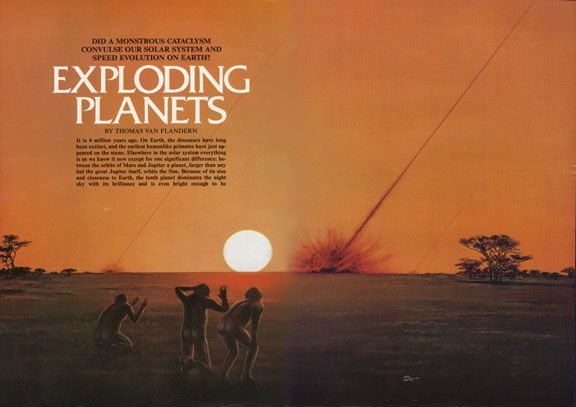
DID A MONSTROUS CATACLYSM
CONVULSE OUR SOLAR SYSTEM AND
SPEED EVOLUTION ON EARTH?
EXPLODING PLANETS
BY THOMAS VAN FLANDERN

| What a sight it must have been for early man: the sky ablaze with meteors and comets streaming among the stars. The earth would never be the same. |
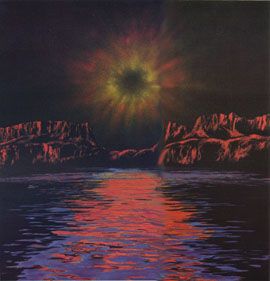 |
| A planet more than a hundred million miles from Mars explodes and douses the Martian surface with water, forming great channels that, though now dry, are still visible. In this artist's conception, the dying eruption illunminates the red planet's landscape. |
| The destruction of this planet, a giant the size of Saturn, released enormous energy. Could comets be debris hurled trillions of miles into space by this event, then later pulled back by the Sun's gravity? |
Enclosed Story:BREAKAWAY MOON |
| PLANET | DISTANCE in AUs |
BODE'S NUMBER |
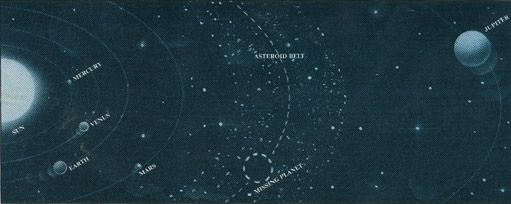 |
| Mercury | 0.4 | 0.4 | |
| Venus | 0.7 | 0.7 | |
| Earth | 1.0 | 1.0 | |
| Mars | 1.6 | 1.6 | |
| ? | ? | 2.8 | |
| Asteroid Belt | 2.1-3.3 | ||
| Jupiter | 5.2 | 5.2 | |
| Saturn | 9.5 | 10.0 | |
| Uranus | 19.2 | 19.6 | According to Bode's law, which establishes a geometrical progression in the distances of the planets from the Sun, a planet is missing in the area between Mars and Jupiter. |
| Neptune | 30.1 | 38.8 | |
| Pluto | 39.5 | 77.2 |
| What caused the planet to explode? Was it uniquely unstable or could our own planet share its fate someday? |
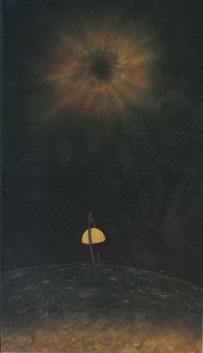 |
Iapetus, one of Saturn's 12 moons, has puzzled astronomers with its strange coloration: black on one side, white on the other. A colossal planetary upheaval (background) 4 million years ago could have charred half of this small moon (foreground). |
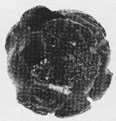 |
|
| Tektites, glassy meteorites, may have rained down on Earth as the blast from a tremendous explosion moved through the solar system. These pebble-size objects, once molten, reached our planet as solids. |
| We even have evidence that water and oxygen, substances necessary for life, existed on the missing planet. |